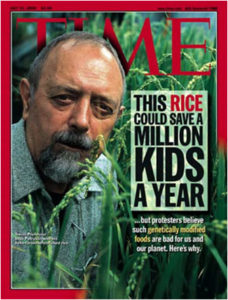Confused about diet? Oh, please.
I breathed a long sigh when I read Gina Kolata’s We’re So Confused: The Problems With Food and Exercise Studies in the New York Times on August 11.
Nearly everything you have been told about the food you eat and the exercise you do and their effects on your health should be met with a raised eyebrow… The problem is one of signal to noise. You can’t discern the signal — a lower risk of dementia, or a longer life, or less obesity, or less cancer — because the noise, the enormous uncertainty in the measurement of such things as how much you exercise or what exactly you eat, is overwhelming. The signal is often weak, meaning if there is an effect of lifestyle it is minuscule, nothing like the link between smoking and lung cancer, for example.
This is a pessimist’s view. I, however, am an optimist.
Nutrition advice could not be easier to understand. Eat plenty of vegetables and fruits; balance calories; don’t eat too much junk food.
David Katz must agree. He asks: Diets, Doubts, and Doughnuts: Are We TRULY Clueless?
No, we are not, absolutely not, emphatically NOT clueless about the basic care and feeding of Homo sapiens…In the New York Times this past week, Gina Kolata made the case that almost all studies about diet, exercise, and health are suspect in one way or another, and that therefore we are confused about lifestyle practices for health, and justifiably so. The first point is valid; the second is utter nonsense…A global consensus of expert judgment concurs… Routine physical activity and a diet of mostly minimally processed vegetables, fruits, whole grains, beans, lentils, nuts, seeds and water when thirsty redounds consistently to the advantage of human health. It offers benefits to the planet as well.
Or, as Michael Pollan famously put it:
Eat food, not too much, mostly plants.
Articles like that one add to the confusion; they don’t help clear it up.







